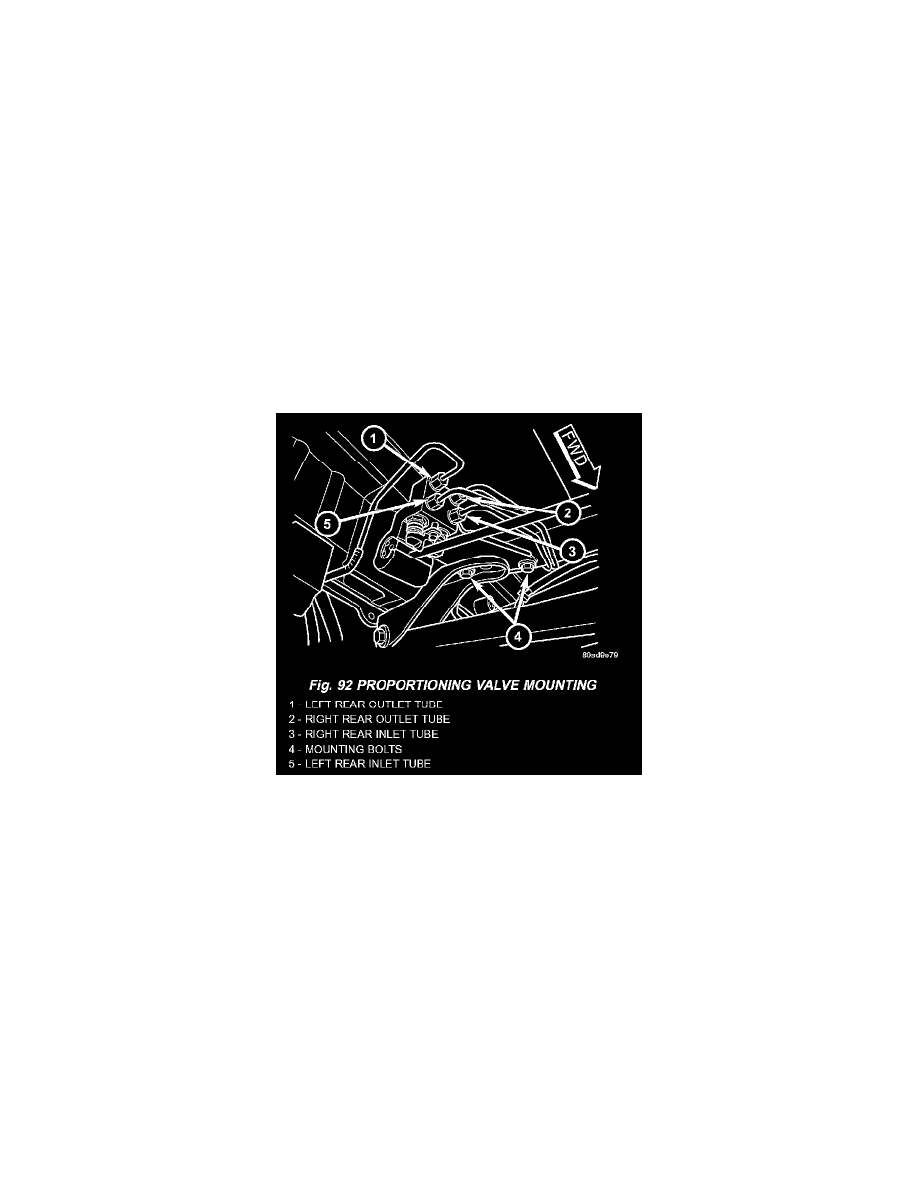Voyager V6-3.3L VIN 3 Flex Fuel (2003)

Brake Proportioning/Combination Valve: Testing and Inspection
DIAGNOSIS AND TESTING - PROPORTIONING VALVE (HEIGHT SENSING)
CAUTION: The use of aftermarket load leveling or load capacity increasing devices on this vehicle is prohibited. Using air shock absorbers or
helper springs on this vehicle will cause the height sensing proportioning valve to inappropriately reduce the hydraulic pressure to the rear brakes.
This inappropriate reduction in hydraulic pressure potentially could result in increased stopping distance of the vehicle.
When a premature rear wheel skid is obtained on a brake application, it may be an indication that the hydraulic pressure to the rear brakes is above the
specified output from the proportioning valve. This condition indicates a possible malfunction of the height sensing proportioning valve, which will
require testing to verify that it is properly controlling the hydraulic pressure allowed to the rear brakes. Premature rear wheel skid may also be caused
by contaminated front or rear brake linings.
Prior to testing a proportioning valve for function, check that all tire pressures are correct. Also, ensure the front and rear brake linings are in
satisfactory condition. It is also necessary to verify that the brakes shoe assemblies on a vehicle being tested are either Original Equipment
Manufacturers (OEM) or original replacement brake shoe assemblies meeting the OEM lining material specification. This vehicles brake system is
not balanced for aftermarket brake shoe assembly lining material.
If both front and rear brakes check OK, proceed with the following test procedure for the height sensing proportioning valve.
1. Road test the vehicle to determine which rear wheel brake is exhibiting premature wheel skid.
2. Raise vehicle.
3. Remove the chassis brake tube going to the rear brake in question at the proportioning valve. Remove the chassis brake tube coming from the
junction block at the proportioning valve.
4. Install the appropriate fittings from Pressure Test Fittings, Special Tool 6833, into the open ports of the proportioning valve.
5. Install the previously removed brake lines into the Pressure Test Fittings. Tighten all tube nuts to 17 Nm (145 in. lbs.).
6. Install a pressure gauge from Gauge Set, Special Tool C-4007-A into the open port on each pressure test fitting. Bleed air out of hose from
pressure test fittings to pressure gauges at the pressure gauges. Then bleed air out of the brake line being tested at that rear wheel brake bleeder.
NOTE: Actuator rod is a linear spring and is meant to flex by design. When rod is raised, it will have some curvature to it.
7. Remove the screw fastening the proportioning valve actuator rod bracket to the rear axle. Raise the actuator lever to the full-upward position and
hold it there.
8. With the aid of a helper, apply pressure to the brake pedal until a pressure of 6895 kPa (1000 psi) is obtained on the proportioning valve inlet
gauge. Then, based on the type of brake system the vehicle is equipped with and the pressure specification shown on the following table, compare
the pressure reading on the outlet gauge to the specification. If outlet pressure at the proportioning valve is not within specification when required
inlet pressure is obtained, replace the proportioning valve.
CAUTION: Do not attempt to adjust the height sensing proportioning valve. If found to be defective, replace the valve.
9. Remove the pressure test fittings and pressure gauges from the proportioning valve.
10. Install the chassis brake lines in the correct ports of the proportioning valve. Tighten all tube nuts to 17 Nm (145 in. lbs.).
11. If necessary, repeat the above steps on the remaining side of the proportioning valve which control the other rear wheel brake.
